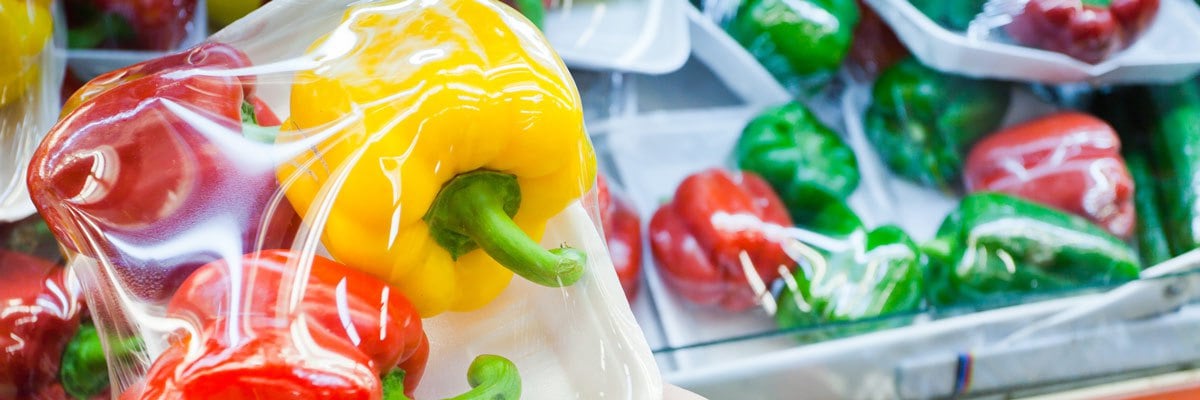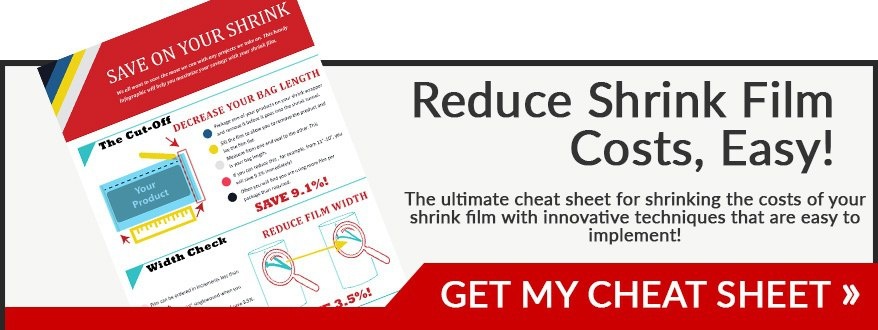7 Characteristics Of Shrink Film You Need to Know
Shrink film is a packaging material made up of polymer plastic film. When heat is applied it shrinks tightly over whatever it's covering. Shrink wrap and shrink film are very versatile materials, and can be used in a large variety of packaging applications. Some common uses of shrink wrap are for wrapping food, gift baskets, boxes, toys, books, soaps, etc.
There are many reasons you may want to utilize shrink film for your product packaging. Along with being lightweight and durable, it keeps your products safe from outside elements, increases shelf life and tamper-proofing and makes your product shine!
Believe it or not, there is a lot more you should know about shrink film. In addition to clarity, which we all know is important, shrink films also have different operating characteristics. Here are seven characteristics you should be aware of when considering the shrink film you need for your packaging.
Want to learn how you can save on your shrink wrap costs? Check out our Shrink Wrap Cheat Sheet to find out:
1. Shrink Force (AKA Shrink Energy)
This is typically measured in PSI, and tells you the amount of force that the shrink film will exert on your product. If you're packaging a multi-pack that needs to be tightly contained without damaging, understanding your shrink force is very helpful, especially for adjusting your shrink machinery accordingly. If the shrink force is high and you're packaging wood, this won't matter.
However, if you are packaging a small stack of paper or lightweight chipboard boxes, this could matter. Historically, Polyolefin films are high shrink force films. Poly Vinyl Chloride (PVC) films have low shrink force. New polyolefin formulations offer reduced amounts of shrink force.
2. Shrink Orientation
Shrink films are either bi-axially oriented, or preferentially oriented. Bi-axially oriented films shrink equally in both directions (Machine Direction or Cross Direction).*
Preferentially oriented film shrinks differently in either direction. The benefits of a preferentially oriented film include using less film, and preventing product distortion.
3. Shrink Percentages
In addition to altering your shrink percentages by using preferentially oriented film, you can also lower the shrink percentage and stay with a bi-axially oriented film e.g. 40/40 30/30, 20/20.
Another related characteristic is Free Shrink. This isn't a tip to get free shrink wrap unfortunately, but it's just as important. I know, I know...
Free shrink is the amount of shrink-ability in a film before it makes contact with your product. High levels of free shrink allow you to get a better looking package on difficult shapes and sizes.
4. Resistance to Puncture / Tear
This measures how hard it is to actually break the film, and how hard it is to tear the film once it has been punctured.
Often, films with high resistance to puncture have lower resistance to tear, and vice versa. If you need to make this trade-off, select the characteristic that is more important (e.g., if you have a window box, puncture resistance is very important). Choose a shrink film that balances the security of your product with ease-of-access to the actual product. Be sure to keep your shrink wrap stored in a cool (but not too cool) storage area to prevent any weakening of the film prior to use.
5. MVTR (Moisture Vapor Transmission Rate)
This characteristic is a measure of how much moisture will or will not travel through the film
If low moisture transmission into or out of your package is important, you should pay attention to this characteristic for improved shelf life.
6. Antifog
Antifog films are used on food (fresh and frozen) to mitigate moisture build-up on the film
The moisture can cause a fog that affects the viewing of the product through the film. (If I'm buying something, you bet that I'm skipping over the fogged up package for the one with the product I can actually see).
7. Odor Barrier
Odor barrier films are used to prevent unacceptable odors from either traveling into, or out of your package. Don't disappoint your customers after they've purchased your product with a foul smell. Enough said.
There you have it, seven important characteristics of shrink film. When you are selecting packaging for your products, keep these in mind. Is your supplier making sure all of these bases are covered with your product, or could you teach them a thing or two?
Begin to understand shrink characteristics and how they can affect your bottom line, and you'll be shrinking costs in no time (insert big laughs here). Do you talk about these items with your current supplier? Or better yet, do they talk to you about these?
If the answer to that question is the latter, get in touch.
About David Roberge
I am grateful to be part of the outstanding Industrial Packaging team. I am able to hang out with some of the most knowledgeable folks in the packaging industry. I feel even luckier that I am able to share that knowledge with you. I love learning, hiking, and growing people and teams both personally and professionally, and helping companies grow better.




